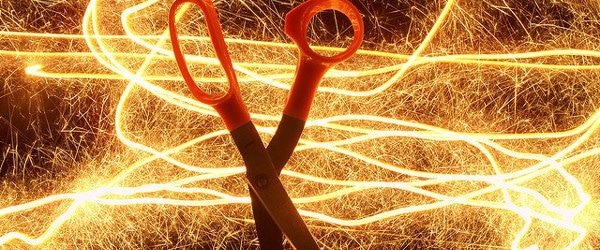Want to know more about ethanol grades commonly used in the lab? You already know that ethanol is super useful. It’s great for killing bugs, setting things on fire, and forcing nucleic acids out of solution. But not all ethanol is created equal, and not all kinds of ethanol are suitable for every task.
To help you make sense of your flammables cabinet, here’s the rundown on the ethanol grades typically used in molecular biology, as well as some important rules for how to use them correctly.
3 Ethanol Grades Used in Molecular Biology
Ethanol has a number of uses in microbiology. It is used in the purification and precipitation of biomolecules, in staining and restaining specimens in histology, in dehydrating tissues before embedding, and in disinfection. There are three grades of ethanol commonly used in the lab.
1) 95% (95.6%) Ethanol
This is the highest concentration of ethanol you can get by distillation because 95.6% ethanol is an azeotrope, which means the vapor state has the same ethanol-to-water ratio as the liquid state.
2) Absolute (99–100%) Ethanol
Some procedures that are sensitive to the presence of water require absolute ethanol. A common method to produce ethanol with a higher concentration than 95% is to use additives that disrupt the azeotrope composition and allow further distillation. For this reason, absolute ethanol sometimes contains trace amounts of these additives (such as benzene).
Absolute ethanol is hygroscopic (it attracts water), so don’t expect it to remain ‘100%’ ethanol for long if it’s left uncapped.
3) Denatured Ethanol
Denatured ethanol (either 95% or absolute) contains additives (such as methanol and isopropanol) that render it unsafe to drink and therefore exempt from certain beverage taxes. This makes it cheaper than pure ethanol. Of all the ethanol grades, this is the one you’re most likely to use for disinfection in your lab.
Ethanol for Molecular Biology
You should not use denatured ethanol when precipitating nucleic acids, since some of the additives can interfere with downstream applications. This is a bit tricky to predict because the additives vary between producers, but it is safest to avoid denatured ethanol altogether.
Non-denatured ethanol at either 95% or 100% can be used, although when working with fluorescently labeled nucleic acids, I don’t use absolute ethanol, to avoid background fluorescence from residual benzene.
Ethanol for Disinfection
Aside from substantial differences in cost, it doesn’t really matter which ethanol grade you use for disinfection, so most labs use a denatured stock. What does matter is the final ethanol concentration. Ethanol is an effective disinfectant at concentrations between 70% and 90%.
Although it may seem counter-intuitive, 70% ethanol seems to be the most effective concentration, as 90% ethanol coagulates the protein, and the protein layer that is created effectively renders the cell dormant.
At a 70% concentration, however, the ethanol takes longer to evaporate and this longer contact time means that it is able to penetrate cells more effectively. The water in a 70% grade is also important in denaturing proteins. And 70% ethanol also tends to be cheaper and is less flammable [1]. (This is all relative; it’s still very flammable!)
However, there are a couple of things to watch out for when diluting ethanol:
- First, diluted ethanol is no longer an azeotrope, so the evaporative loss will result in a gradual decrease in ethanol concentration. Don’t be surprised when an unsealed beaker of 70% ethanol ‘stops working’.
- Second, ethanol/water mixtures don’t have additive volumes. That means that if you want to make 1 liter of 70% ethanol from absolute ethanol, you can’t do it by mixing 700 ml of ethanol and 300 ml of water. The correct method is to measure 700 ml of ethanol and then bring it to a volume of 1 liter with water.
Understanding Vanishing Volumes: Why Water and Ethanol Mixes Do Not Have Additive Volumes
Why don’t ethanol/water mixtures have additive volumes, you ask?
Water molecules form hydrogen bonds with each other, which leaves “empty” space between the water molecules. (Okay, that’s a huge simplification, but you quickly get into quite difficult physics when you read into the properties of states of matter.)
When you mix water and ethanol, the ethanol molecules molecules occupy some of the space between the water molecules. A helpful way to visualize this is to think about sand and rocks—if you were to mix 1 liter of each, you wouldn’t get a final volume of 2 liters because the sand would fall between the rocks.
There are also significant intermolecular forces, including hydrogen bonding and dipole-dipole interactions at play, but that’s a story for another day.
For everyday lab life, you need only to remember that fluid volumes (i.e. liquids and gasses) are not always necessarily additive, and there may be a vanishing volume.
References
- Ali, Y, Dolan, MJ, Fendler, EJ, and Larson, EJ (2001), Alcohols in Disinfection, Sterilization, and Preservation, ed. Block, SS, 5th ed, Philadelphia: Lea & Febiger.
Originally published June 13, 2012. Reviewed and updated April 2021.





